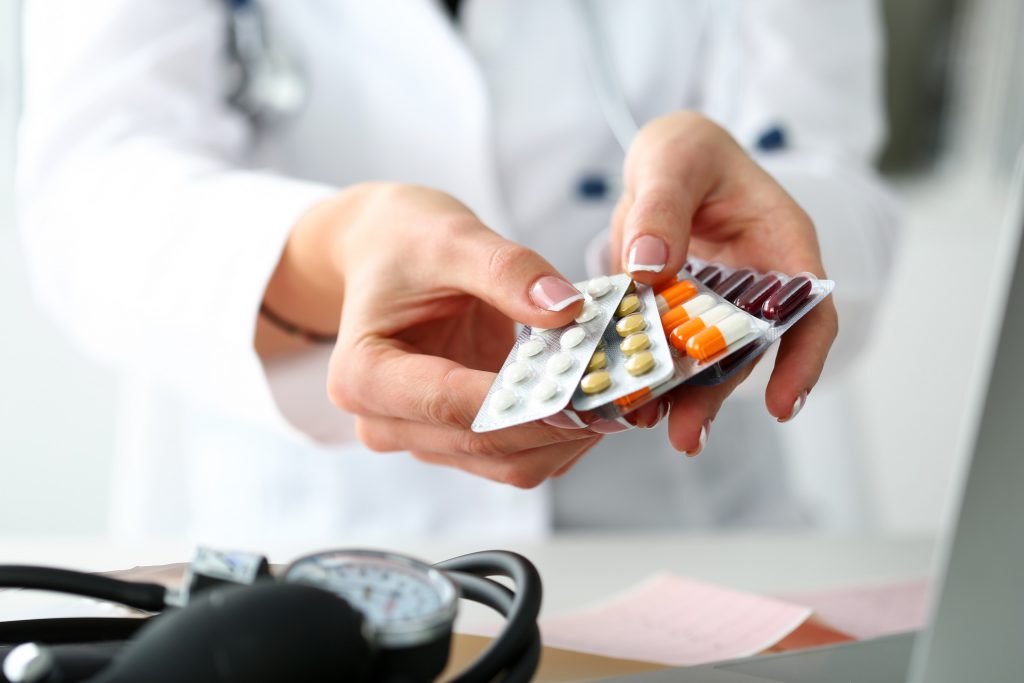Sunday Times Healthy Times
The Dangers Of Self-Medication
Most of us at one time or another have popped into a pharmacy to pick up some over-the-counter (OTC) medication. And of course, those medicines are designed to be safe for consumers to administer themselves – provided they stick to the recommended dosage guidelines.
But there are some important provisos. “The major danger is irresponsible self-medication, when patients or consumers self-medicate without having taken reasonable steps to understand the need to self-medicate,” says Dr Deepa Maharaj, Self-Medication Manufacturers Association of South Africa (SMASA) technical and regulatory committee chairman.
One of the dangers of using OTC medication is the risk of drug interactions. “Drug interactions may make your drug less effective, cause unexpected side effects, or increase the action of a particular drug,” says Giulia Criscuolo, pharmacist, complementary medicines expert and life coach for Coyne Healthcare. “Some drug interactions can even be harmful to you. Reading the label every time you use a non-prescription or OTC medication and taking the time to learn about drug interactions may be critical to your health.”
Maharaj concurs: “According to (chronic pain expert) Karen Lee Richards (in her online article Preventing Adverse Drug Reactions), any drug can cause an adverse event if used improperly or when combined – OTC medicines and natural supplements included. She also notes that symptoms of drug interactions can vary from minor cases of nausea or headaches to serious symptoms like blood pressure fluctuations, damage to vital organs, and even death.”
Some of the common drug interactions Richards warns about, she says, are:
- Aspirin or ginkgo biloba with prescription blood thinners.
- Antacids with antibiotics, blood-thinners or heart medicines.
- Decongestants with anti-hypertension drugs or monoamine oxidase (MOA) inhibitors.
- Ferrous sulphate with the antibiotic tetracycline.
And these are just the tip of the iceberg. “Even some foods and drinks (like dairy products and grapefruit juice) can have detrimental interactions with various antibiotics, blood pressure medications, antihistamines, etc.”
Criscuolo also flags the problem of addiction: “Some of the more common medications open to abuse are codeine-containing cough mixtures and pain medications, and derivatives thereof.”
She says codeine abuse is a real challenge, because the drug has legitimate uses, making it difficult to refuse a customer who may be taking codeine appropriately, and codeine addicts will often go from one pharmacy to another, sometimes buying 40 or 50 boxes in a single day.
OTC medication is both abused and misused, she adds. “For example, let’s say someone knows they will get a pleasant or euphoric feeling by taking a drug, especially at higher doses than prescribed. That is an example of drug abuse because the person is specifically looking for that euphoric response.”
In contrast, if someone isn’t able to fall asleep after taking a single sleeping pill, they might take another pill an hour later, thinking that will do the job, she says. “Or they might offer their headache medication to a friend who is in pain. Those are examples of drug misuse, because even though these people did not follow medical instructions, they were not looking to get high from the drugs. They were treating themselves, but not according to the directions of their healthcare providers.”
She explains that in both cases – no matter the intention of the person – the behaviour can be harmful and even life-threatening. This is because taking a drug other than the way it has been prescribed – for a specific person – can lead to dangerous outcomes that one might not anticipate.
“Patients need to chat to their pharmacist or doctor if they are unsure of their self-medication needs,” says Maharaj. “They must be armed with their medical history and any other medications they are taking to ensure that their healthcare professional can advise them accordingly.
“Any self-medication product should be taken in line with the package insert or patient information leaflet, and generally for not longer than advised under the dosage and directions for use.”
And if it’s not working after that period, it’s time to see a doctor.
“I work regularly as a locum in a chain of pharmacies and I am always amazed at how people often take several brands of cold and flu medication, hoping to ‘nip it in the bud’ and ‘knock it down quickly’ as they ‘cannot afford to get ill – too much going on, no time to rest’,” says Criscuolo. “But they don’t realise that the same kind of drugs are in all these preparations: antihistamines, decongestants, painkillers and sometimes caffeine. This is an example of polypharmacy – the use of a large number of medications, commonly considered to be the use of five or more.
“When symptoms persevere and your condition worsens or does not improve, self-medicating is simply not the solution. If your symptoms become chronic, it is time to do something different and go and see your doctor or other healthcare provider.”
She says taking medicine to treat continuing symptoms without seeing a doctor could mean that you are letting an underlying condition go undiagnosed.
“Often people don’t even realise they are self-medicating harmfully until they find themselves in a full-blown addiction,” says Maharaj. “People must understand their mental and physical health, and if they are self-medicating to manage underlying conditions such as depression or extreme stress.”
Finally, says Criscuolo, “If you are showing other signs of addiction such as substance tolerance, cravings and withdrawal symptoms if you stop taking the substance, then this is a sign that you have crossed over a threshold and you need to seek help.”
Vital questions to ask
SMASA’s Dr Deepa Maharaj says when purchasing OTC medication, consumers should be prepared and armed with critical information such as:
- Any allergies.
- A symptom history (for example onset, severity and location).
- Medical and family history.
- Current medication (all of it).
Lifestyle factors (use of caffeine, tobacco, alcohol and so on).
They should also raise any concerns and questions, such as:
How often should this medication be taken?
For how long?
When should it start to work?
How much should be taken?
Are there medications that should be avoided with this one?
Are there side effects, like drowsiness?
Must any lifestyle changes be made?
Common drug interactions
Coyne Healthcare’s Giulia Criscuolo says you can reduce the risk of potentially harmful drug interactions and side effects with a little knowledge and common sense.
She says drug interactions fall into three broad categories:
1. Drug interactions occur when two or more drugs react with each other. This may cause you to experience an unexpected side effect. For example, mixing a drug that helps you sleep (a sedative) and a drug you take for allergies (an antihistamine) can slow your reactions and make driving a car or operating machinery dangerous.
2. Drug-food/beverage interactions result from drugs reacting with foods or beverages. For example, mixing alcohol with some drugs may cause you to feel tired or slow your reactions.
3. Drug-condition interactions may occur when an existing medical condition makes certain drugs potentially harmful. For example, if you have high blood pressure, you could experience an unwanted reaction if you take a nasal decongestant.






 Sign-up and receive the Business Media MAGS newsletter OR SA Mining newsletter straight to your inbox.
Sign-up and receive the Business Media MAGS newsletter OR SA Mining newsletter straight to your inbox.